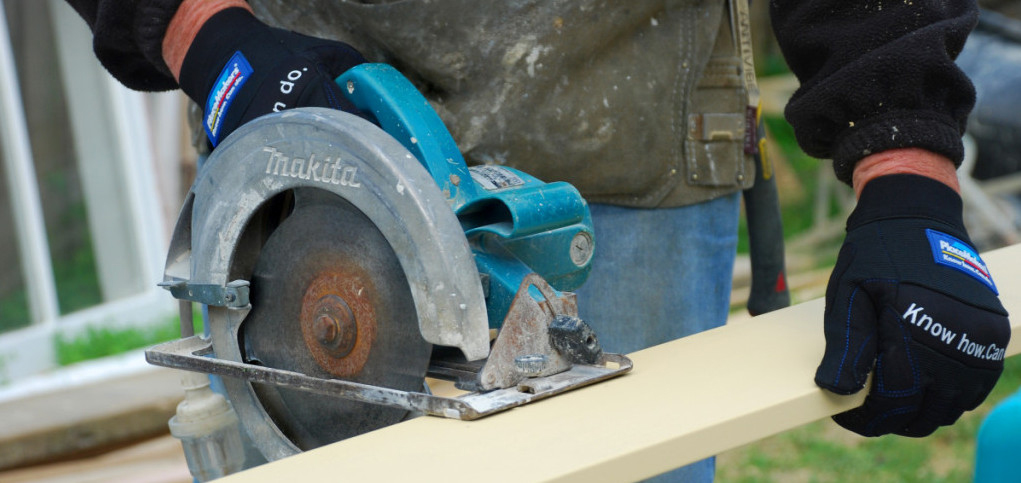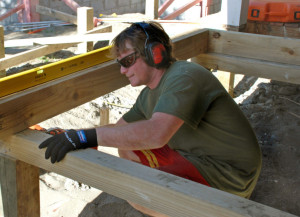Worksite safety is good for business
22 Feb 2014, Prove Your Know How, Safety

Safety is something that can easily slip off the radar – especially after an extended Christmas break – so start the year off right by reminding your staff or yourself, to adhere to some simple but essential safety procedures.
No one sets out to have a work accident, but the simple fact is that building sites contain all sorts of hazards that are accidents waiting to happen. Many of us may not be aware of what the hazards are, or we may become so involved in the task we’re doing that we overlook the hazards and the risk they pose to us.
As a result, injuries in the construction industry are high. In 2012, ACC made payments of more than $81 million for over 50,000 new or existing claims in the construction industry alone. Remember, taking steps to make your workplace safer and managing the hazards can save you a lot of pain, time and money.
Focusing on the welfare of people in your workplace is good for business all round – it can avoid the human and business costs of workplace injuries, improve productivity and avoid the costs and negative impacts of an injury, such as an employee absence, or an official investigation.
“In 2012, ACC made payments of more than $81 million for over 50,000 new or existing claims in the construction industry alone.
Here are some simple tips and advice to help reduce your risk of injuries in and around a building site:
Lifting, carrying and straining
Lifting, carrying and straining were cause for almost 6,000 new and ongoing claims in the construction industry in 2012. To avoid becoming part of this statistic, follow these tips:
- Use mechanical load shifting devices, such as cranes, hoists and hand trucks to move materials around the worksite.
- Fit temporary lifting points or handles to heavy or awkward loads.
- If manual lifting is required, make sure you have enough workers available to complete the task, remembering the old saying ‘many hands make light work’.
Protecting against noise
If you’re working in a noisy environment, use hearing protection. In 2012, noise-induced hearing loss resulted in over 8,000 new and ongoing claims in the construction industry, with more than $4 million being paid out.
Hearing loss is permanent but you can prevent it by following these tips:
- If you can’t hear someone talk when you are 1-2 metres apart, you need hearing protection, and so do they.
- Ensure that hearing protection is supplied and used at all times.
- Even short periods without wearing hearing protection will damage your hearing. For example, five minutes operating a circular saw will damage your hearing.
- Make sure your hearing protection is effective – it needs to be in good condition, you need to know how to wear itcorrectly, and it needs to be the correct class of hearing protection for the type of work you are doing.
- Check noisy tools to ensure they are well maintained and, when possible, separate workers from noisy activities.
- Place warning signs in areas of excessive noise – that’s anything above 85 decibels, which is the level of noise you hear when you are hammering a nail or using a hand saw.
Safeguard against a loss of balance and falling
In 2012, loss of balance and falls relating to ladders and stepladders saw $5.1 million in payments made
for new and ongoing injury claims.
Here are some tips to avoid having this happen on your worksite:
- Use the most effective levels of ‘falls protection’ measures available such as scaffolding, guard railing and appropriate physical barriers.
- Ensure that your building site’s working areas and access ways are clear of any obstructions that may lead to an accident.
- Where possible, use mechanical equipment like scissor lifts, which allow work to occur without reaching.
- Provide safe access to upper floors.
Avoid collision, being knocked over or hit by a falling object
- Keep work and access areas clear.
- Remove unwanted materials and construction waste from the work site, so that it does not accumulate.
- Ensure all power leads and other tools and equipment are positioned so as not to cause a tripping hazard.
- Avoid attaching bracing across door frames that people are likely to walk through.
Avoiding punctures or cuts
In 2012, over 1,000 new injury claims were a result from punctures or cuts with knives, hammers, chainsaws,
spanners, axes, slashers, cleavers and hand-held circular chainsaws in the construction industry.
- Check that all tool guards function correctly and are safe to use.
- Make sure that any exposed nails and other sharp objects are removed or knocked in.
- Make sure that all workers wear the appropriate PPE, such as gloves, safety boots and knee protection pads.
Know how to use the tools and equipment
Using the right tools for the job is important, but perhaps even more important is knowing how to use them. Only use the tools and equipment that you have been trained to use.
- Check all power leads and guards are in good condition.
- Always use a residual-current device (R.C.D.) to prevent electrocution, and turn tools off at the power source when done.
- Wear the right protective gear – eye and hearing protection, as well as suitable footwear.
How ACC can help
Whatever the size or requirements of your businesses, ACC is able to offer you different levels of health and safety support, and provide resources to help prevent injuries both in and out of the workplace. ACC also has a number of programmes to help build safer businesses. Participation in some of these can also result in levy discounts. We encourage you to check out our website www.acc.co.nz
For more information on workplace safety visit www.acc.co.nz/construction
Register to earn LBP Points Sign in




